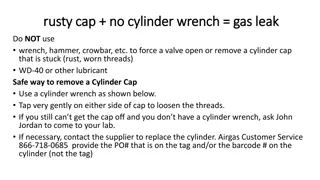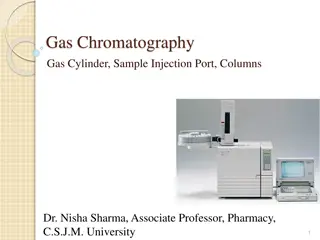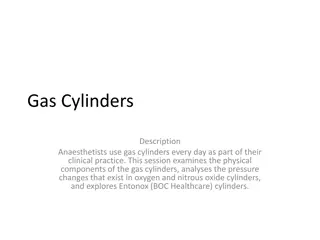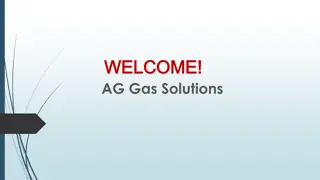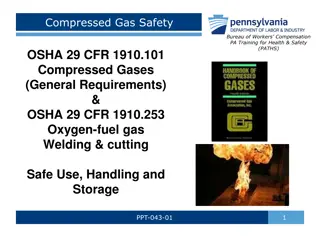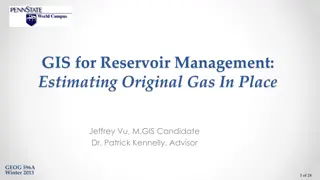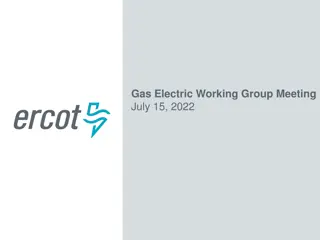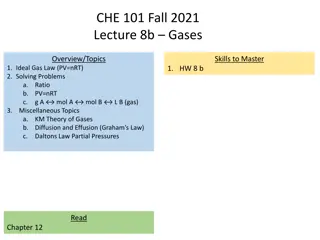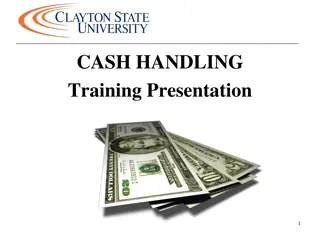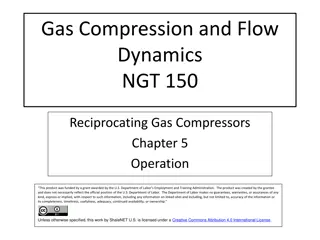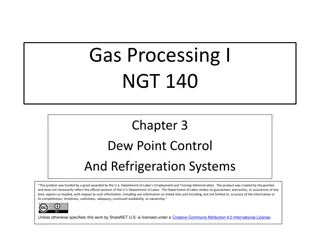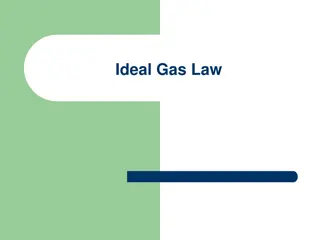Comprehensive Training on Medical Gas Management and Cylinder Handling
This training program, led by Beatrice Adu, covers joint clinical and non-clinical aspects of medical gas management. Topics include color coding for medical cylinders, ideal color codes for oxygen cylinders, cylinder accessories, proper handling techniques, and identifying when a cylinder is empty. The content also explores cylinder trolley accessories, bed head units, and best practices for safe and effective use in healthcare settings.
Download Presentation

Please find below an Image/Link to download the presentation.
The content on the website is provided AS IS for your information and personal use only. It may not be sold, licensed, or shared on other websites without obtaining consent from the author. Download presentation by click this link. If you encounter any issues during the download, it is possible that the publisher has removed the file from their server.
E N D
Presentation Transcript
JOINT CLINICAL AND NON- CLINICAL TRAINING BY: BEATRICE ADU TEAM LEAD: NATIONAL MEDICAL GAS MANAGEMENT TRAININGTRAINING
OUTLINE CYLINDER MANAGEMENT 1. Color code for medical cylinders 2. Ideal color codes for medical oxygen cylinders 3. Cylinders and its accessories 4. Proper handling of cylinders 5. How to tell when the cylinder is empty BED HEAD UNITS AND ACCESSORIES.
IDEAL COLOR CODE FOR MEDICAL OXYGEN CYLINDERS
MEDICAL OXYGEN CYLINDER ACCESSORIES
MEDICAL OXYGEN CYLINDER ACCESSORIES
MEDICAL OXYGEN CYLINDER ACCESSORIES (CYLINDER TROLLEY)
CYLINDER MANAGEMENT PROPER HANDLING OF A CYLINDER 1. always use a cylinder trolley when conveying a cylinder 2. Apply breaks of cylinder trolley when trolley is stationary 3. Do not lift a cylinder by their protective cap 4. Always cover the top of cylinder with its protective cap when not in use 5. Gently turn the cylinder valve when ready to open or close 6. Always use the right size of wrench when attaching or detaching a flowmeter to the cylinder. 7. Secure cylinder to a wall when in use on the ward. Eg. Use a wall bracket
CYLINDER MANAGEMENT HOW TO TELL WHEN THE CYLINDER IS EMPTY With the valve opened, take a look at the manometer If the pressure reading on the regulator is close to or on zero, then cylinder is empty
BED HEAD UNITS AND ACCESSORIES Bed head unit Terminal units Humidifier bottle and flowmeter Best practice for use of Bed head units Best practice for handling flowmeters and humidifier bottles
BEST PRACTICE FOR USE OF BED HEAD UNIT Do not spill fluids on it or clean immediately when that happens At the sound of a leakage, quickly alert engineers and do not use
BEST PRACTICE FOR HANDLING FLOWMETERS AND HUMIDIFIER BOTTLES Always use distilled water in humidifier bottles Do not exceed the maximum limit for water filling Do not throw away the seal on the cover of the humidifier Do not leave water in bottle when not in use Disinfect the humidifier bottle after discharging each patient (or dust where necessary)
HOW TO CLEAN A HUMIDIFIER Empty the humidifier bottle Wash inside and out with mild soap and water Rinse with a disinfectant Follow with a hot (not boiling) water rinse Then refill the humidifier bottle with distilled water If not in use immediately, air dry on a paper towel
RINSE WITH A DISINFECTANT Note that some manufacturer s instructions for use require the humidifier bottle to be rinsed daily with a solution of 10 parts water and one part vinegar as a disinfectant. Avoid touching the inside of the bottle or lid after it has been cleaned and disinfected to prevent contamination.
THE END THANK YOU. BY:BEATRICE ADU TEAM LEAD: NATIONAL MEDICAL GAS MANAGEMENTTRAINING






